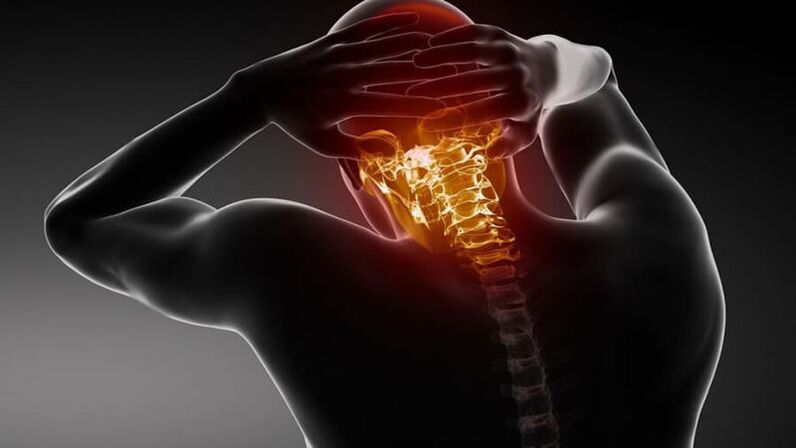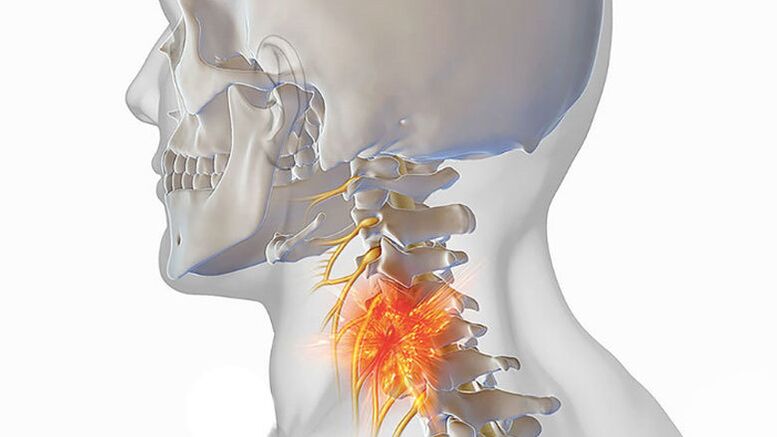
Since the rise of the distant human ancestor Homo Electus, humanity, in addition to all the benefits that can be obtained from walking upright (protection from wild animals, improved vision, expanded functions)work), has suffered from many musculoskeletal diseases. Cervical osteonecrosis is one of them. Some people do not take illness seriously, considering it an unpleasant but insignificant obstacle. This is especially true in situations where there is no severe pain.
Cervical spondylosis: causes, symptoms, treatment and prevention
Dizziness with cervical spondylosis is often considered a symptom separate from the main disease, but as a result, the disease can lead to serious complications and even disability. In this article, we will look at what medications to take when experiencing dizziness with cervical spondylosis, learn how to get rid of dizziness with cervical spondylosis and analyze what exercises to do. Should be done when dizziness occurs due to cervical spondylosis.
Cervical spine degeneration
The term osteoarthritis comes from the Ancient Greek words ὀστέον – "bone" and χόνδρος – "cartilage". Doctors use this term to refer to a group of dystrophic changes in joint cartilage caused by an increase in bone tissue volume. More than other joints, the layer of cartilage between the vertebrae, which in medicine is called the "disk", is affected.
Osteonecrosis is divided by type into "cervical", "thoracic" and "lumbar". Cervical is the most common. Today, this disease is a constant companion of any person over 40 years old. Despite the opinion that the disease develops over the years and young people do not suffer, modern medical practice proves the opposite, giving disappointing statistics in people over 30year old.

reason
Causes of osteoarthritis include direct causes (compression of vertebral vessels and nerves - cervical vertebrae compression) and indirect causes, related to the patient's lifestyle and physiological characteristics. of body.
Types of compression complications of osteoarthritis:
- Degenerative spine. Displacement of the spinal disc from the back or front. With significant speed, displacement can lead to paralysis and death.
- Osteoporosis. Abnormal development and pathology of bone tissue due to calcium salts.
- Protrusion. Protrusion of the intervertebral disc without disrupting the integrity of the collagen ring.
- Herniation. Displacement of the disc core is accompanied by rupture of the collagen ring.
Reason for compression:
- intense physical work;
- physical inactivity, "computer" disease, sedentary pastime;
- higher than normal weight;
- metabolic disorders;
- genetic predisposition;
- incorrect posture;
- weak muscle tone in the neck and back in general;
- tension and fatigue in back and neck muscles;
- tendency to maintain a certain position of the neck, for example, the habit of tilting the head to one side;
- "old" injury to the cervical spine;
- nervous shocks and stress.
Symptoms of cervical spondylosis
The main symptoms of cervical spondylosis are sporadic and constant pain in the neck, upper shoulder girdle, collarbone and head. As the disease progresses, dizziness (dizziness) and loss of consciousness may occur.
The full range of symptoms of cervical spondylosis is so diverse that patients often cannot independently identify one or another symptom with cervical spondylosis. Even the attending physician must conduct a detailed examination to make an accurate diagnosis.
Symptoms of the disease change as it progresses. Modern medicine distinguishes 4 stages of progression of osteoarthritis:
I – small changes in normal cervical curvature. There may be slight pain when turning the head. Mild discomfort when bending neck;
II – small displacements between vertebrae, torsion (uncoordinated rotation of the vertebrae relative to the spinal ligaments), reduction in the thickness of the cartilage between the vertebrae. Mild to moderate pain appears in the neck and head, tingling in the fingertips, ringing in the ears, and when the patient turns his head, he hears a light crunching sound;
III – The intervertebral cartilage is displaced 1/4 compared to the other side, the thickness and size of the disc changes selectively, gradually thins, changes its normal shape, bone spurs behind narrow the spinal canal, cause spinal cord damage. The pain becomes intense, loses its discrete nature, becomes stable in nature, fluctuating from moderate to severe. Weakness appears in the hands, impaired hearing. When you turn your head, not only the patient but also those around you hear the crunching sound. There may be loss of coordination of movements. By the way, dizziness due to cervical spondylosis is a very alarming sign, in which you should immediately consult a doctor if this has not been done;
IV – the intervertebral discs are significantly displaced, the posterior bone spurs and protrusions become abnormally large, the spinal canal is significantly narrowed and curved, forming myelopathy (spinal cord compression syndrome andits blood vessels). Frequent dizziness and loss of consciousness. Intense and very severe pain in the neck, head, collarbone, and shoulders. The face, tongue and palate are numb. Vision and hearing are significantly impaired. Whole body weakness. Legs and arms were taken away. Temporary paralysis of limbs. A very significant loss of spatial coordination. Swallowing reflex disorder. Complete loss of feeling in hands and throughout the body.
Treatment and prevention of cervical spondylosis
When asking the question "how to cure cervical spondylosis? ", we must remember that with cervical spondylosis, treatment must be timely, not late.
Treatment and prevention measures are closely related to each other in the treatment of cervical osteoarthritis. Usually, the difference between them lies in the severity of the disease. Prevention of osteoarthritis is applied before the onset of the disease and during the first three stages of the disease. Treatment of the disease begins from the moment it appears.
In this section, we will find out whether it is possible to eliminate many unpleasant symptoms of cervical spondylosis at once, what exercises can be done when dizziness occurs with spondylosisneck, what drugs, medicines and folk remedies are best used for complex osteoarthritis, how to cure dizziness, how to treat dizziness due to cervical spondylosis with folk remedies.
Prevent
Eliminates multiple signs of bone degeneration at once. Includes four types of therapy:
- The traditional way to eliminate the signs of cervical spondylosis and dizziness is to regularly lead a healthy lifestyle;
- physical therapy (not recommended in the third stage of the development of osteonecrosis, although the final decision is up to the spine specialist);
- massage and self-massage (although manual therapy is very effective for cervical spondylosis and can easily relieve pain, it is not recommended in the late stages of the disease);
- apply orthopedic advice and orthopedic equipment (Kuznetsov instruments, furniture, household appliances) in everyday life.
Ethnographic
Cervical osteoarthritis can be treated at home with traditional medicine. The products she creates are creative combinations of herbs, essential oils, fats, toxins, roots of various plants with alcohol and iodine.
Can traditional medicine reduce dizziness and pain? Here the situation is the same as in the case of drug treatment - pain can disappear almost immediately, preventing dizziness will take some time. Treatment with traditional medicine must be started as soon as possible to ensure positive results.
























